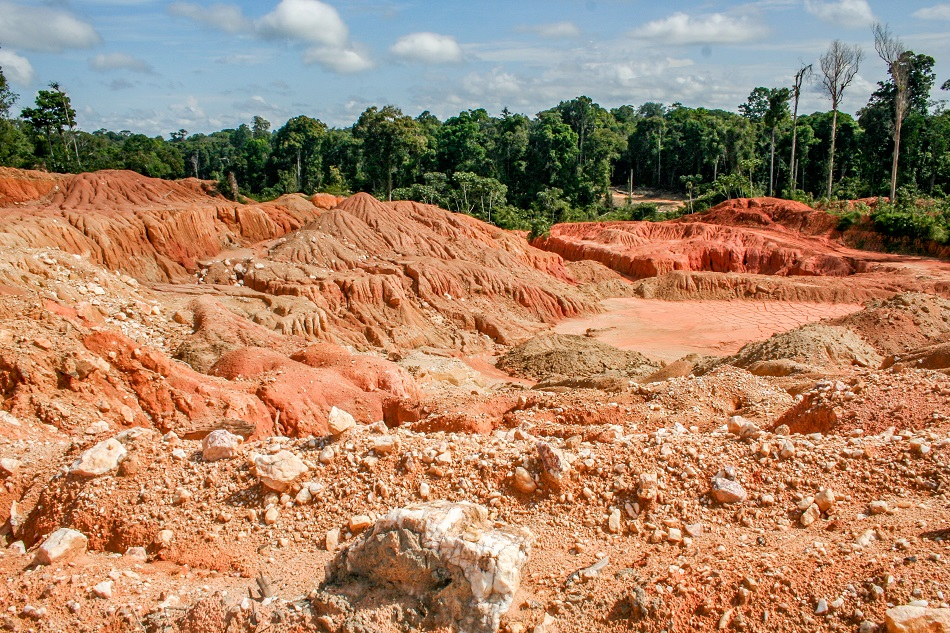
Image Credit: kakteen/Shutterstock.com
Guyana is a mineral-rich nation located in the northern part of South America between Venezuela and Suriname, bordering the Atlantic Ocean. It has a total area of 214,969 km2, and its total population is 740,685 as of 2018. The country has a range of climatic conditions including tropical, hot, humid and moderate.
Economy
Guyana’s economy is largely dependent on the export of resources such as bauxite and gold. Its economic growth rate remained moderate for many years, until its entry into the Caricom Single Market and Economy (CSME) in 2006, which expanded its mineral export market.
Since then, the country has experienced positive economic growth, and despite unskilled labors, deficient infrastructure and economic slowdown during the global recession in 2009, the country’s GDP picked up and reached $6.301 billion in 2017.
However, despite this upward trend, the country’s GDP growth rate showed a slight slump in 2017 with 2.1% growth compared to 3.1% in 2016. With the advent of higher oil exploration revenues, growth is predicted to increase dramatically in 2020 to 34%, according to reports by the World Bank.
The major export partners of the country are:
Canada, accounting for 24.9% of the country’s total export (2017 figures)
United States, 16.5% of the country’s total export
Panama, 9.6% of the total export
United Kingdom, 7.7% of total export
Jamaica, 5.1% of the total export
Trinidad and Tobago, 5% of total export
Others, 31.2% of the total export
Overview of Resources
Guyana is rich in natural resources such as gold, bauxite, alumina and natural gas. The country’s major mineral exports include gold and bauxite. Oil and uranium deposits have been found onshore and offshore and are likely to be developed in the coming years.
Industrial Minerals and Semi-Precious Gemstones
Overall diamond production in Guyana has decreased in recent years from 143,982 carats in 2009 to 64,000 carats in 2018, as the focus of mining switched to gold owing to low prices of diamonds in the global market. The body responsible for overseeing mineral production in Guyana is the Guyana Geology and Mines Commission.
U3O8 Corp. of Canada has obtained rights from the Guyana government to mine uranium in the Roraima Basin and the Kurupung Batholith regions, which cover a total area of 1.3 million hectares. According to 2018 reports, U3O8 Corp. has estimated that the Kurupung Batholith region contains a 16millionpound resource.
Metals
The value of bauxite exports in the country increased to $156 million in 2017, compared to $79.5 million in 2009. Guyana is the 12th largest producer of bauxite in the world. The Bonasika bauxite project is a major enterprise in Guyana which is expected to have a 25-year life and is projected to produce and process 232,000 tons of raw bauxite per year. The proven and possible reserves in this massive mining project are estimated to be 9.71Mt.
.gif)
The Map of Guyana. Image Credit: CIA factbook
Guyana Goldfields Inc. is a Canadian company that is involved heavily in the gold mining industry in Guyana. Their Aurora mine is expected to produce 145,000-160,000 oz of gold in 2019. According to a March 2019 technical report by the company total proven & probable reserves in the Aurora mining project are 26.9Mt. The company is also developing the Aranka gold project, a 275,000acre deposit near the Aurora mine.
Fossil Fuels
Currently, Guyana is not a major producer of oil, but plans are in the pipeline to change this in the near future. By 2025, according to an estimate from Exxon Mobil Corp, Guyana’s total output is expected to reach 750,000 barrels a day.
The 1,800km2 Orinduik Block is estimated to hold 3.2billion barrels of oil, according to 2019 reports. The exploration is a joint venture between Tullow Guyana B.V., Eco Oil & Gas, and Total E&P Guyana B.V. The JV partners have been granted a further three-year license, through January 13, 2023.
Moreover, companies including ExxonMobil, Hess Corp., Total S.A., and Qatar Petroleum are all active in oil exploration in Guyana.
Investment
The country has welcomed many foreign investments in the mineral sector and the government has developed investor-friendly mining and tax laws. Many joint ventures in the mineral industry were set up by foreign investors during the last decade. In recent years, the country has set up a new ministry to monitor the mining industry. However, there are problems with the smuggling of resources from this mineral-rich nation to neighboring countries.
Gold exploration activities in the country are likely to continue at a fast pace. Uranium exploration in Kurupung Batholith and Roraima Basin and diamond mining will likely strengthen in the coming years.
In addition, Guyana Geology & Mines Commission has reported the presence of natural gas reserves in the Essequibo islands of Leguan and Wakenaam. Oil exploration is likely to reach a turning point over the next five years. With these rapid exploration and development plans and an investor-friendly attitude, the country’s mineral industry will likely remain strong in the coming years.
Disclaimer: The author of this article does not imply any investment recommendation and some content is speculative in nature. The Author is not affiliated in any way with any companies mentioned and all statistical information is publically available.
Sources and Further Reading
This article was updated on 27th February, 2020.
Disclaimer: The views expressed here are those of the author expressed in their private capacity and do not necessarily represent the views of AZoM.com Limited T/A AZoNetwork the owner and operator of this website. This disclaimer forms part of the Terms and conditions of use of this website.